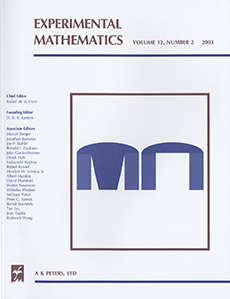Abstract
We study hypersurfaces moving under flow that depends on the mean curvature. The approach is based on a numerical technique that embeds the evolving hypersurface as the zero level set of a family of evolving surfaces. In this setting, the resulting partial differential equation for the motion of the level set function may be solved by using numerical techniques borrowed from hyperbolic conservation laws.
This technique is applied to several problems: the evolution of a dumbbell, and related many-armed surfaces, collapsing under mean curvature; the construction of a minimal surface attached to a given one-dimensional wire frame in $\reals^3$, and, more generally, the construction of surfaces whose mean curvature is a prescribed function of position; the motion of curves on two-manifolds under flow that depends on geodesic curvature.
Some experiments involving flow controlled by Gaussian curvature are also included.
Citation
David L. Chopp. James A. Sethian. "Flow under curvature: singularity formation, minimal surfaces, and geodesics." Experiment. Math. 2 (4) 235 - 255, 1993.
Information




